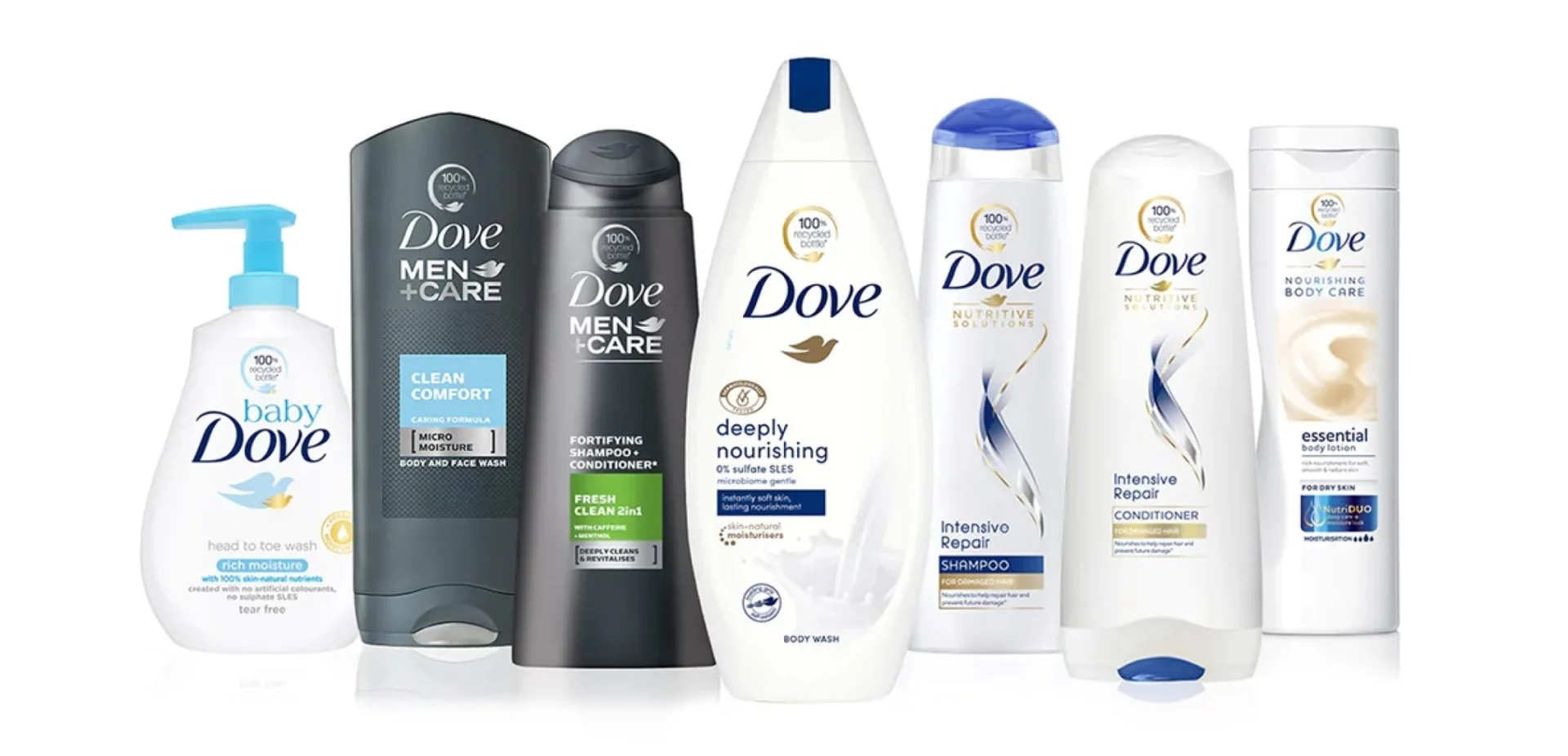INSIGHTS / BRAND
The 5 Rules Of Managing Your Brand
Uberbrand on 26/09/2024

In 1999, Nielsen Media Research identified more than 500,000 brands worldwide across 2,000+ product categories.
Today, the number has expanded to such a degree that it’s impossible to conduct that same scale of brand research.
What we do know is: the marketplace is incredibly competitive and increasingly expanding. That means effective strategic brand management is more critical than ever. Most consumers have a plethora of options at their fingertips, so what key factors play a part in why they choose one brand over another?
Standing out from the crowd requires more than just a good product or service. It involves creating a strong, trusted, and recognisable brand that resonates with your target audience.
Keep reading to understand how effective brand management not only differentiates your business, but also builds customer loyalty, enhances reputation, and drives long-term success.
Rule #1: Understand Your Audience
It might sound straightforward, but sometimes the simplest ideas are challenging to execute.
A deep understanding of your target audience is at the core of what separates a company’s brand that can effectively meet specific consumer needs from one that can’t (or that does this less successfully).
That means really knowing who your customers are, what they want, and how they behave so you can tailor your brand to meet their expectations and preferences.
Audience Research
The first step in gathering valuable insights of your audience begins with comprehensive research. As you’d expect, this involves accurately collecting basic demographic data.
From here expand further into the psychographic profiles, and behavioural insights of your target audience.
- Demographic data gives you a basic understanding of your audience’s characteristics (age, gender, income, location, education, etc.)
- Psychographic profiling helps in uncovering your audience’s interests, values, and lifestyle choices, which helps in crafting messages that resonate on a personal level
- Behavioural insights, on the other hand, focus on how your audience interacts with your brand and makes purchasing decisions
By understanding these behaviours, you can anticipate their needs and address pain points more effectively.

Customer Personas
Creating detailed customer personas helps in visualising different segments of your audience.
Here’s an example of a persona for a reusable coffee cup brand: Jess is a 30-year-old yoga instructor who lives near the beach in Sydney with her Cavoodle, Chauncey. She values health/wellness and will walk ten minutes further in the morning to get her morning coffee from the Mindful Café that is eco-friendly.
A reusable coffee cup keeps her drink warmer for longer in between breaks during her teaching sessions and holds up in her reusable canvas bag alongside her active lifestyle. It also makes her feel good about reducing her carbon footprint.
Personas like these provide a human face to data, making it easier to create and curate targeted marketing strategies.
You can also delve deeper and build this persona out a lot further to really get into the nitty gritty of what motivates your customers, what challenges they face, and what solutions they are seeking.
With detailed personas you can tailor your messaging, product development, and customer service to better meet the specific needs of each segment of your audience.
Feedback and Surveys
Around 35% of consumers feel misunderstood by brands (and an even bigger figure feels misrepresented or ignored).
Regularly collecting feedback (via surveys, reviews, direct interactions, etc) is crucial for making informed decisions about product development, marketing strategies, and customer service improvements.
Feedback is one of the best real-time insights into how your target audience perceives your brand and products.
From here you can uncover areas of improvement and implement reflective change to show your customers that you value their opinions. It’s what consumers want after all – to feel more connected to brands they care about, and feel more engaged.

Competitor Analysis
There’s not a successful brand in the world that has no idea who their competitors are and what their competitors are doing.
Defining and analysing what your competitors are doing will help in identifying market trends and opportunities for differentiation.
You can also discover things your competition is doing well, or gaps where they are falling short via their SEO strategies, content performance, and audience engagement.
By understanding your competitors’ strengths and weaknesses, you can refine your own brand and marketing strategies to better meet customer needs and stand out in a competitive space.
Successful Brand Extension
Let’s look at Coca-Cola as a mini case study here. As one of the most recognised brands in the world, it’s no surprise that they are a textbook example for successful segmentation of an audience.
In the 1970s, Coca-Cola realised that traditional Coke couldn’t cater to or be relevant for the entire cola market.
To broaden their appeal and meet individual preferences, they introduced:
- Diet Coke for health-conscious consumers
- This was later expanded to include Coke Zero, positioned towards men
While both products offer reduced sugar and the same great taste, their distinct brand positioning allowed Coca-Cola to target specific customer segments effectively. This also protected them from competition while opening them up to a broader market opportunity.

Rule #2: Deliver Value (Don’t Sell Out)
Delivering value is fundamental to building a loyal customer base. Value is tied to perception, and if you can deliver real and perceived value, paired with a clearly defined USP, you’ll be able to foster brand loyalty and trust.
Value Proposition
A clear value proposition is what customers consider when deciding if they want to choose your brand over others.
It’s key that your value prop clearly expresses the unique benefits and solutions your product or service provides. For example, Apple’s value proposition emphasises innovation, quality, and user experience.
A strong value proposition differentiates your brand from competitors and communicates the unique benefits your customers can expect. It should address the specific needs and pain points of your target audience and demonstrate how your brand provides superior solutions.
Avoiding Over-Commercialisation
No customer will say they had a great experience with the pushy car salesperson trying to lock them into a deal. Customers are savvy, and increasingly wary of brands that prioritise sales over genuine engagement. By focusing on building relationships and providing value, you can foster loyalty and trust.
You can do this via your brand story, values, and mission to create a deeper and more authentic connection with your audience. Share behind-the-scenes stories, customer testimonials, and content that aligns with your brand values and your audience.

Building Trust
There are many schools of thought towards fostering loyalty and trust, but when it comes down to it – consistent, transparent, authentic and value-driven interactions are the must-have ingredients for this recipe.
I.e. delivering on promises, providing excellent customer service, and maintaining open communication. One of the most common ways to foster trust in the modern age is through social proof, such as customer testimonials and case studies.
Balancing Profit and Principles
Balancing the need for profit with adherence to core values is the delicate tightrope all brands need to balance upon.
Brands that stick to their principles, even in the face of profit-driven temptations, tend to build stronger, more loyal customer relationships.
For instance, Toms’ and Patagonia are two brands renowned for their commitment to community and sustainability, which resonates deeply with their respective audiences.
Adhering to core values can enhance your brand’s reputation and foster loyalty. Customers are more likely to support brands that align with their own values and demonstrate a commitment to ethical practices, which is a key component of a successful brand management strategy.

Rule #3: Maintain Relevance
Staying relevant in a constantly changing market landscape is vital for long-term brand success.
Brand consistency is important, but brands that are willing to do things differently and remain adaptive by continuously innovating, and regularly reviewing brand strategies.
A 2023 research study uncovered a list of 50 brands who have consistency evolved in a relevant way, such as:
- Apple is the perennial leader in constantly improving products and customer experiences. They’ve seamlessly weaved themselves into people’s day-to-day lives, the pillar of trust and reliability. Pair that with their ability to help and inspire people to create, explore and enjoy, and you’ve got yourself a highly relevant and competitive brand.
- LEGO (est. 1939). They have evolved in branding, but also products (such as speciality sets like Harry Potter, Star Wars etc. that offer wider variety for broad demographic from kids to adults), a physical LEGOLAND, partnerships with LEGO Masters on TV, etc.
- Nike is another example of a brand that has consistently asked consumers and athletes for feedback when designing their products and created loyal brand evangelists.
- Google is constantly expanding its suite of offerings with new initiatives, being at the forefront of security, privacy and tech accessibility and integration. Google also has a strong community and sustainability focus where their uses feel like they genuinely care.
Staying Updated with Trends
Staying updated with trends allows you to anticipate changes in the market and adapt your strategies accordingly to meet evolving customer needs.
If you can pre-empt and nimbly respond to shifts in consumer preferences ensures – even better. That’s how your brand stays relevant.
This means keeping your finger on the pulse when it comes to conducting regular market research, attending industry events, monitoring competitors, reviewing industry reports, and engaging with thought leaders can provide valuable insights, all of which are crucial for brand management success.

Continuous Innovation
Innovation is the key to keeping your brand fresh and appealing.
It doesn’t necessarily equate to introducing new products – it could include improving existing ones or adopting new technologies.
From a consumer perspective, brands that consistently innovate are successful and committed to providing the best possible solutions for your customers.
Investing in research and development to fuel innovation ensures you can meet changing demands, stay ahead of trends and introduce new offerings that excite and engage your audience.
Regular Reviews of Brand Strategies
Thanks to globalisation and the proliferation of online accessibility, consumers do a good job of keeping brands accountable for their products, services, views and actions.
However, regular internal and external reviews of your brand strategies and practices are essential to ensure they meet current market demands. This includes evaluating your marketing campaigns, product offerings, and customer feedback.
These also help identify areas of improvement and ensure your strategies align with market conditions and customer needs. By continuously assessing your performance and making necessary adjustments, you can maintain a competitive edge.
Reaching New Demographics
Expand your brand’s reach by exploring new market opportunities (like diversifying your product line or entering new geographic locations to attract new demographics).
Growing your customer base = increasing market share. Research to understand the needs and preferences of different segments and tailoring your offerings to meet those needs. By expanding your reach, you can tap into new revenue streams and drive business growth.
Case Study: CSU
Initially perceived as a constraint, Charles Sturt University’s regionalism turned out to be a unique strength. By embracing its regional identity, the university positioned itself as a significant part of local economies and a voice for regional issues.
This relevance at economic, social, and cultural levels strengthened its brand and ensured its sustainability and relevancy.

Rule #4: Communicate Your Brand Consistently
Consistency across all brand communication and touchpoints ensures a cohesive and recognisable brand image.
Brand Guidelines
Brand guidelines provide a framework for how your brand should be represented across various channels. They ensure that everyone involved in creating content for your brand adheres to the same rules to maintain a consistent look and feel. This consistency helps build brand recognition and trust among your audience.
Brand guidelines extend to usage of all visual and verbal elements like logo usage, colour schemes, typography, tone of voice, and messaging.
Multi-Channel Consistency
Maintaining a unified voice and appearance across all communications reinforces your brand identity, ensures multi-channel consistency and ensures an intuitive and seamless experience for your audience.
This extends to your website, social media, email marketing, print materials, and customer service interactions; from a customer interacting with you on social media, to visiting your website, or receiving an email, for example.
Internal Alignment
Brand synergy depends on the right training and resources being created and implemented so that brand managers and all team members are equipped to represent your brand consistently. Internal alignment ensures that everyone within your organisation is on the same page and working towards the same goals.
Messaging Strategy
A good messaging strategy is reflective of your brand’s identity, values and be conscious of resonating with your target audience. For example, Dove’s messaging focuses on real beauty and self-confidence, resonating with their primary audience on an emotional level. The strategy should be tailored to your audience’s preferences to build a stronger connection and foster loyalty.

Rule #5: Evaluate Your Brand’s Performance
Regularly assessing the effectiveness of your brand management efforts to help guide making informed decisions and continuous improvements.
Performance Metrics
Establishing key performance indicators (KPIs) specific to your short and long term objectives, such as; brand awareness, customer satisfaction, sales, market share, online engagement.
Having these measurable benchmarks in place to track and evaluate your brand’s performance will help identify areas of success and areas that need improvement. Regularly monitoring KPIs means you can make data-driven decisions to enhance your brand’s effectiveness.
Brand Audits
You can perform a brand audit by reviewing all brand touchpoints, assessing brand perception, and identifying areas for improvement.
From this, you can identify inconsistencies, gaps, and opportunities for improvements so your brand remains aligned with your overarching goals and remains relevant with your audience.

Feedback Analysis
Analysing customer feedback provides insights into how your brand is perceived and areas for improvement. By regularly monitoring reviews, surveys, and social media comments you’ll garner a deeper understanding of customer sentiments to make necessary adjustments.
Analysis of feedback lets you identify common themes and issues, understand customer expectations, and make informed decisions to enhance your brand’s performance.
Adjust Strategies
Based on performance data and feedback analysis, adjust your brand management strategies where needed. This might involve refining your value proposition, updating your brand guidelines, or revisiting your marketing tactics to better align with customer needs and market trends.
Adjusting your strategies based on data and feedback ensures that you are continuously improving and staying relevant. It allows you to respond to changes in the market and customer preferences, ensuring that your brand remains competitive and effective.
Recap of Key Rules
- Understand Your Audience: conduct thorough research, create customer personas, collect feedback, and analyse competitors.
- Deliver Value: define and communicate your unique value proposition, avoid over-commercialisation, build trust, and balance profit with principles.
- Maintain Relevance: stay updated with trends, continuously innovate, review brand strategies, and reach new demographics.
- Communicate Consistently: create brand guidelines, ensure multi-channel consistency, align team members, and develop a strong messaging strategy.
- Evaluate Performance: establish KPIs, perform brand audits, analyse feedback, and adjust strategies accordingly.
Importance of Brand Management
Effective brand management not only differentiates your business but also builds customer loyalty, enhances reputation, and drives sustainable success.
Applying these rules to your own brand and engaging with a professional brand management agency can elevate your brand management efforts. With dedication and strategic planning, you can create a brand that resonates with your audience and stands the test of time.






































